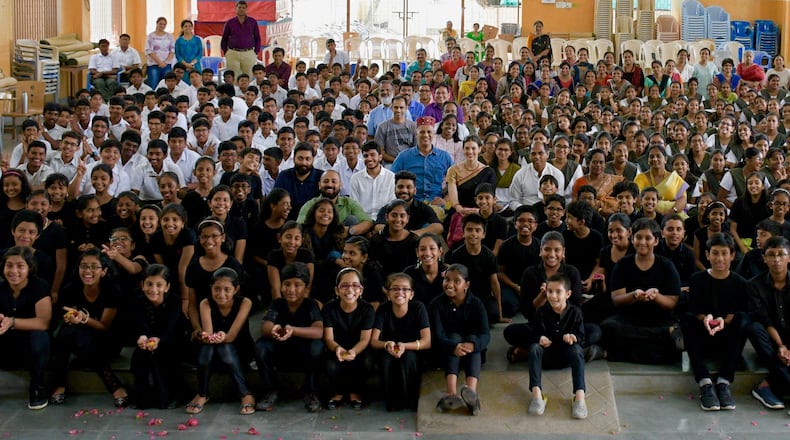“They suggested we perform music by minority composers, or under-represented composers in classical music, and I thought this was a great idea,” Averbach said.
Averbach saw multiple schools were creating videos with a collage of performances, but he said he wanted to do something different, and more original.
That’s when Averbach and his students joined forces with Miami graduate Srinivas Krishnan, artistic director of LEAP Boundary Breakers in India, to celebrate Price’s music through a collaborative performance of her song “Adoration.” Krishnan, knowledgeable about the history of cinema in India, added his creativity to the initiative. His family has been actively involved in the Bollywood industry.
“He also had the idea of using umbrellas as a symbol of shelter. So, a lot of images in the video have young women carrying umbrellas as if to protect the music of Florence Price that traveled across the Atlantic to another part of the world,” Averbach said.
The production team also enlisted Dr. Derrick Harkins, a lifelong friend of Averbach and the national director of interfaith outreach for the Democratic National Committee, to write new lyrics for the song, which was originally written as an instrumental composition.
The video is available on YouTube.
The Miami students individually recorded their parts using cell phones, and the parts were put together in a composition . The vocal parts and most of the video footage were recorded by dozens of school children in India who are part of LEAP Boundary Breakers program, which drives leadership amongst youth. Then, Krishnan and his students produced the video.
“There were many challenges there. They did this in Chennai, and the children are usually all from very humble families. It’s not like here in the United States, where everybody has a cell phone. So, they borrowed cell phones, and it was difficult for them to record, because it’s very noisy in India. They live in a highly populated area with lots of traffic. So, it was a major challenge for them to do this, to record, individually,” Averbach said.
Also, the video’s editor in India lives in a small village where there is no internet.
“Those kids would be sending their videos in their cell phones, and he had to use his cell phone at the hot spot, which doesn’t have a large band. So, for a 30-second video to be uploaded in his computer, it would take 25-minutes to a half an hour. Plus, I wanted to include videos of the Miami Orchestra, my students, because this was a collaboration. So, my videos where much bigger, and the files were much larger, so the editor would spend the entire night uploading the videos that were sent from here. That’s why it took such a long time. It took us three months to produce this video,” said Averbach.
Most of the filming for the video took place in Besant Nagar, a neighborhood in Chennai, India.
About the Author

